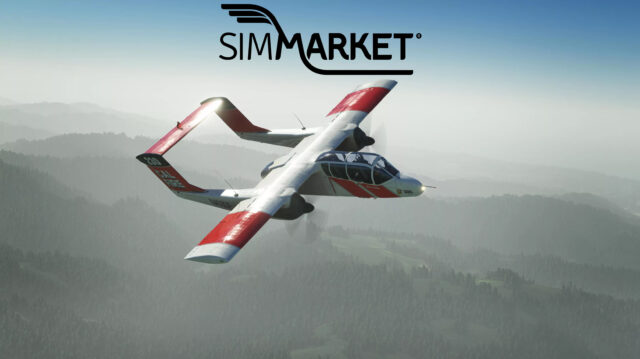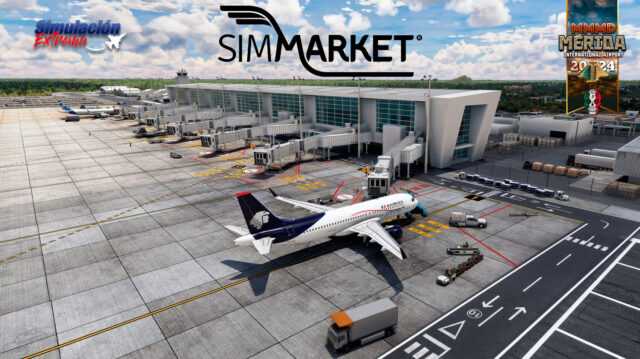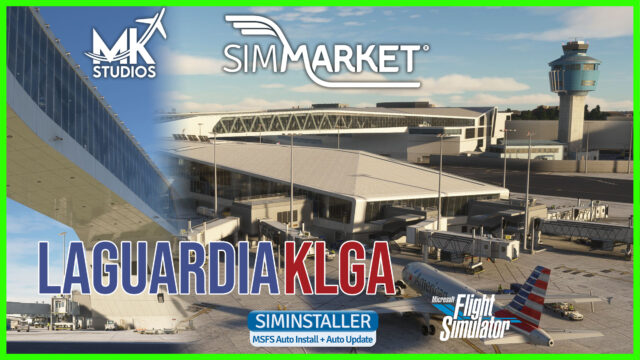Boeing didn’t stop improving and expanding on the 777 family after they finished the original 777-200. In the same way, PMDG didn’t just forget about their 777-200LR/F when they initially released it. They released a major service pack at the beginning of last summer, and concurrently they also released an expansion pack in the form of the 777-300ER, the biggest and baddest variant of the family. This expansion is what this review is all about.
The real 777-300ER entered service in 2004 as the fourth 777 variant. It quickly became the best-selling model in the family. Compared to the 777-300, it features extended wingtips, structural reinforcements, a new main landing gear, a strengthened nose landing gear and additional fuel capacity. Apart from those, it also features a significantly higher maximum takeoff weight (MTOW) compared to the 777-300, and a new version of the GE90 turbofan, the GE90-115B.
Purchase and installation:
The PMDG 777-300ER is (at the moment) only available for FSX, and can only be bought through the PMDG website. It sells for US $29.99, but don’t forget that it requires a working copy of the 777-200LR/F base pack to be installed first. Once bought, you download the 115MB installer from the link that was emailed to you. Once your download has finished, all you have to do is run the installer and follow the usual steps. You’ll note, as usual with PMDG products, that activation (using a serial) is not done during installation, but the first time you run the product in FSX.
If updates are available for the -300ER, the PMDG Operations Center will notify you, and enable you to instantly download and install the relevant update. As with the base PMDG 777, you’ll also use the Operations Center to download and install liveries, as the basic installer only comes with the PMDG House livery.
As for the rest of this review, I’ll mainly be focussing on what makes the -300ER different from the PMDG 777-200LR/F Base Pack. If you don’t already own that product and want to get a feel for that as well, read my reviews here: First Impressions Review, SP1 Review.
Exterior:
The first thing to notice in the exterior, is the added length of the 777-300ER compared to the -200LR of the base pack. The 777-300 adds another 10m (33ft) to the already impressive size of the 777-200. It is something that is really apparent when you look at it in the exterior views in FSX.
Another notable aspect here, is the big selection of official repaints available through the PMDG Operations Center. The best of all is that you get some very nice ‘special’ liveries. Think of Air New Zealand ‘The Hobbit’ or ‘All Blacks’ repaints, an Air France Skyteam logojet, Emirates’ ‘1000th 777’,… A very nice selection out of the (figurative) box, and third party repaints are smoothly rolling of the lines as well.
As for the quality of the exterior, both model and textures, I don’t have anything to add to what I said in my review on the base pack. It’s just as good, just as detailed. And what I mean to say by that is that it is very, very good.


Interior:
Compared to the exterior, the changes in the virtual cockpit are hardly noticeable between the available versions of the PMDG 777. Not very surprising, as this is the case with the real Boeing 777-200LR and -300ER as well. The most obvious change is that there’s an extra button on the glareshield that activates the taxi cameras. More on those later.
The overall result is exactly the same as in the PMDG 777-200LR/F: a very detailed and good looking virtual cockpit, with lots and lots of equipment options that can be changed in flight. Performance is also similar.


Systems:
You might have guessed already, but the systems implementation on the 777-300ER is just about the same as on the variants coming with the base pack. Of course there are the peculiarities of the -300ER. It has the bigger engine, the GE90-115BL1 is modelled here (compare to the GE90-110B1 on the 777-200LR). It also models the changes to the landing gear of the 300ER, and comes with some other systems that are slightly different compared to the base pack’s -200LR and -F variants. The higher MTOW and larger cabin which give you the possibility to load more passengers through the CDU menu’s are of course also modelled.
But the most visible system that was added to the PMDG 777-300ER are those taxi cameras I already mentioned briefly. Due to the extremely long fuselage of the real aircraft, these cameras were added by Boeing to aid the pilots in taxiing the aircraft. PMDG modelled them, and they do work, but there are some caveats here. For one, the taxi cameras open in a 2D panel, instead of being displayed on the MFD in the virtual cockpit. This is due to technical FSX limitations. The biggest issue though, is that using these taxi cameras creates a huge drop in frame rates. The reason for this is simple: your pc suddenly has to render the whole situation 4 times: once for your main view, and once again for each of the 3 taxi cameras. Needless to say, you need a monster PC to make this run smooth if you don’t want to lower your FSX graphics sliders to the bare minimum at highly detailed airports.
Despite these issues, I have to applaud PMDG for adding the taxi cameras. Obviously, they’re not perfect, like I just pointed out. But if they didn’t add them, other people would have been complaining about that too. If I may be so bold as to describe a personal feature request here, it would be to make it possible to disable the taxi cams through the options menu, with an ‘Inop’ sticker or something like that added in the VC. But that’s a personal request which, in the great scheme of things, isn’t all that important.


Flight dynamics:
The biggest difference between the 777-200LR and the 777-300ER can be found in this aspect of the simulation. While these variants don’t show much difference visually in the virtual cockpit, you will notice a huge difference as soon as you release the parking brake and advance the throttles. The 777-300ER is powered by 2 hugely powerful engines, but it is also very long and heavy. It takes more power to get the aircraft rolling and it takes more power to make it through a turn. But it not just during taxi that these differences are apparent. During takeoff and flight you’ll notice them as well. The -300ER is not nearly as overpowered as the -200LR, and so it will use more runway on takeoff, climb less nimbly, and initially cruise quite a bit lower. The challenges during takeoff are also shifted. While your main concern in the 777-200LR or 777F would be controlling your speed, the 777-300ER needs a relatively careful rotation technique to keep from smashing that enormously long tail into the runway. All this makes for an interesting change in focus in this expansion compared to the base pack.

Conclusion:
It’s not illogical to be wondering about what this US $29,99 expansion pack might be adding to the base PMDG 777-200LR/F apart from the different exterior. I’ll gladly admit that I was wondering about this as well. But of course, that’s without taking the signature PMDG level for detail into account. While the look and feel of the virtual cockpit aren’t much different, the difference in ‘feel’ of flying and managing the 777-300ER were a welcome surprise for me. This most definitely is not one of those ‘exterior only’ expansion packs that are so common in our hobby. For me, this is one of those ‘expansions of an expansion’ that does not feel like easy money for the developer. It’s a whole different beast that compels you to slightly shift your focus compared to its smaller sibling in order to make it a perfect flight from start to finish.
Like:
- Just as good as the base pack overall
- Not merely a visual expansion, but with attention for all aspects of the 777-300ER.
Don’t like:
- Nothing major. Maybe that I would like the taxicams to be an optional feature that can be enabled/disabled through the CDU menu. But that’s me nitpicking just to write something here.
Useful links:
Test System:
Intel Core i5-2500K @ 4×3.3GHz (stock speed)
8GB DDR3 RAM
MSI N560GTX-Ti Twin Frozr II
Windows 7 64 bit
FSX Deluxe + Acceleration
Add-ons Used:
REX Essentials
Active Sky Next
Ground Environment X Europe
Orbx FTX Australia
Orbx YBCS Cairns
Aerosoft Mega Airport Brussels
And several other add-ons used during testing…














![[Video🎬] New Trailer 4K for Turkish Airports MSFS by SceneryTR Design – Istanbul – Ankara Trabzon by SIMMARKET](https://www.simflight.com/wp-content/uploads/2024/04/SceneryTR_thumb.jpg)